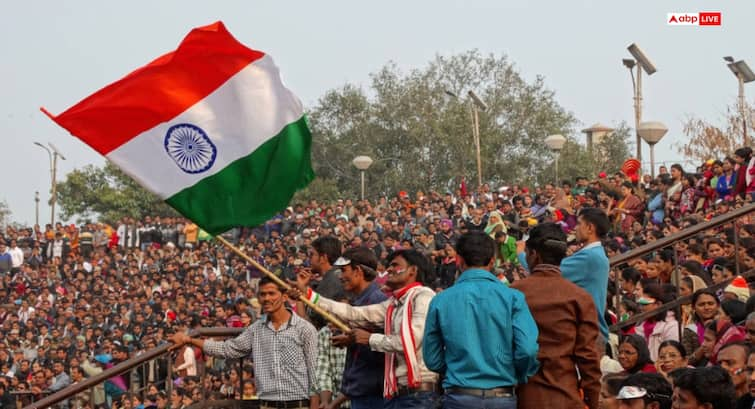- April 9, 2023
Arunachal: Amit Shah to launch border village plan in Arunachal tomorrow | India News – Times of India

NEW DELHI/ GUWAHATI: Union home minister Amit Shah will on Monday launch the ‘Vibrant Villages Programme’ (VVP) — a Rs 4,800-crore centrally-sponsored scheme aimed at integrated development of villages adjoining the Indo-China border — from Kibithoo, a border village in Anjaw of eastern Arunachal Pradesh. Kibithoo was also one of the theaters of the 1962 India-China war.
Shah’s two-day visit to Arunachal Pradesh to unveil VVP comes in the backdrop of a fresh irritant from China, that is, renaming of 11 places in the state in Mandarin and Tibetan languages. All these places fall in an area that China claims as south Tibet or Zangnan. India was quick to dismiss Beijing’s move — ostensibly a ploy to bolster its territorial claims in future border talks with India — saying that assigning “invented names” would not alter the fact that the state has been and shall always remain an integral part of India.
Kibithoo in Arunachal Pradesh’s Anjaw district is about 15km south of the LAC and 40km west of the India-China-Myanmar tri-junction. Located at an elevation of 13.5 metres, Kibithoo is one of the remotest circle headquarters in Arunachal and also the only circle headquarters facing the India-China border.
VVP — which will have a Rs 2,500-crore road connectivity component — aims to develop 2,967 villages across 19 border districts of Arunachal Pradesh, Sikkim, Ladakh, Uttarakhand and Himachal Pradesh over the period 2022-23 to 2025-26. The development-cum-connectivity push — which in the first phase will cover 662 villages, including 455 in Arunachal Pradesh — is aimed at improving the quality of life of the border residents and encourage them to stay put in their native locations, thereby reversing outmigration and strengthening border security.
Shah will also inaugurate nine micro-hydel projects of the state government under the ‘golden jubilee illumination programme”. His other engagements in Kibithoo include inauguration of ITBP infrastructure projects in Likabili (Arunachal), Chapra (Bihar), Nooranad (Kerala) and Visakhapatnam (Andhra Pradesh); an interaction with ITBP personnel; and visit to an exhibition of products made by women’s self-help groups in the border districts.
On Tuesday, Shah will visit Namti field and pay homage at the Walong war memorial.
Shah’s visit is being seen as a counter to China’s designs in Arunachal Pradesh as it unrolls from the same place an initiative aimed at encouraging permanent border settlements on its side of the northern border. VVP, security analysts believe, will enhance border security as access to development and civil amenities is expected to instil a feeling of patriotism and “belonging” among the residents and boost information flow on movements and plans of the “enemy” forces. Such settlements also tend to bolster India’s territorial claims during border talks and help resist attempts of encroachment.
Under VVP, the district administration shall, with the help of appropriate mechanisms at block and panchayat level, prepare action-plans for the identified village to ensure 100% saturation of central and state schemes. The focus areas of interventions include road connectivity, drinking water, electricity including solar and wind energy, mobile and internet connectivity and healthcare infrastructure.
Shah’s two-day visit to Arunachal Pradesh to unveil VVP comes in the backdrop of a fresh irritant from China, that is, renaming of 11 places in the state in Mandarin and Tibetan languages. All these places fall in an area that China claims as south Tibet or Zangnan. India was quick to dismiss Beijing’s move — ostensibly a ploy to bolster its territorial claims in future border talks with India — saying that assigning “invented names” would not alter the fact that the state has been and shall always remain an integral part of India.
Kibithoo in Arunachal Pradesh’s Anjaw district is about 15km south of the LAC and 40km west of the India-China-Myanmar tri-junction. Located at an elevation of 13.5 metres, Kibithoo is one of the remotest circle headquarters in Arunachal and also the only circle headquarters facing the India-China border.
VVP — which will have a Rs 2,500-crore road connectivity component — aims to develop 2,967 villages across 19 border districts of Arunachal Pradesh, Sikkim, Ladakh, Uttarakhand and Himachal Pradesh over the period 2022-23 to 2025-26. The development-cum-connectivity push — which in the first phase will cover 662 villages, including 455 in Arunachal Pradesh — is aimed at improving the quality of life of the border residents and encourage them to stay put in their native locations, thereby reversing outmigration and strengthening border security.
Shah will also inaugurate nine micro-hydel projects of the state government under the ‘golden jubilee illumination programme”. His other engagements in Kibithoo include inauguration of ITBP infrastructure projects in Likabili (Arunachal), Chapra (Bihar), Nooranad (Kerala) and Visakhapatnam (Andhra Pradesh); an interaction with ITBP personnel; and visit to an exhibition of products made by women’s self-help groups in the border districts.
On Tuesday, Shah will visit Namti field and pay homage at the Walong war memorial.
Shah’s visit is being seen as a counter to China’s designs in Arunachal Pradesh as it unrolls from the same place an initiative aimed at encouraging permanent border settlements on its side of the northern border. VVP, security analysts believe, will enhance border security as access to development and civil amenities is expected to instil a feeling of patriotism and “belonging” among the residents and boost information flow on movements and plans of the “enemy” forces. Such settlements also tend to bolster India’s territorial claims during border talks and help resist attempts of encroachment.
Under VVP, the district administration shall, with the help of appropriate mechanisms at block and panchayat level, prepare action-plans for the identified village to ensure 100% saturation of central and state schemes. The focus areas of interventions include road connectivity, drinking water, electricity including solar and wind energy, mobile and internet connectivity and healthcare infrastructure.







